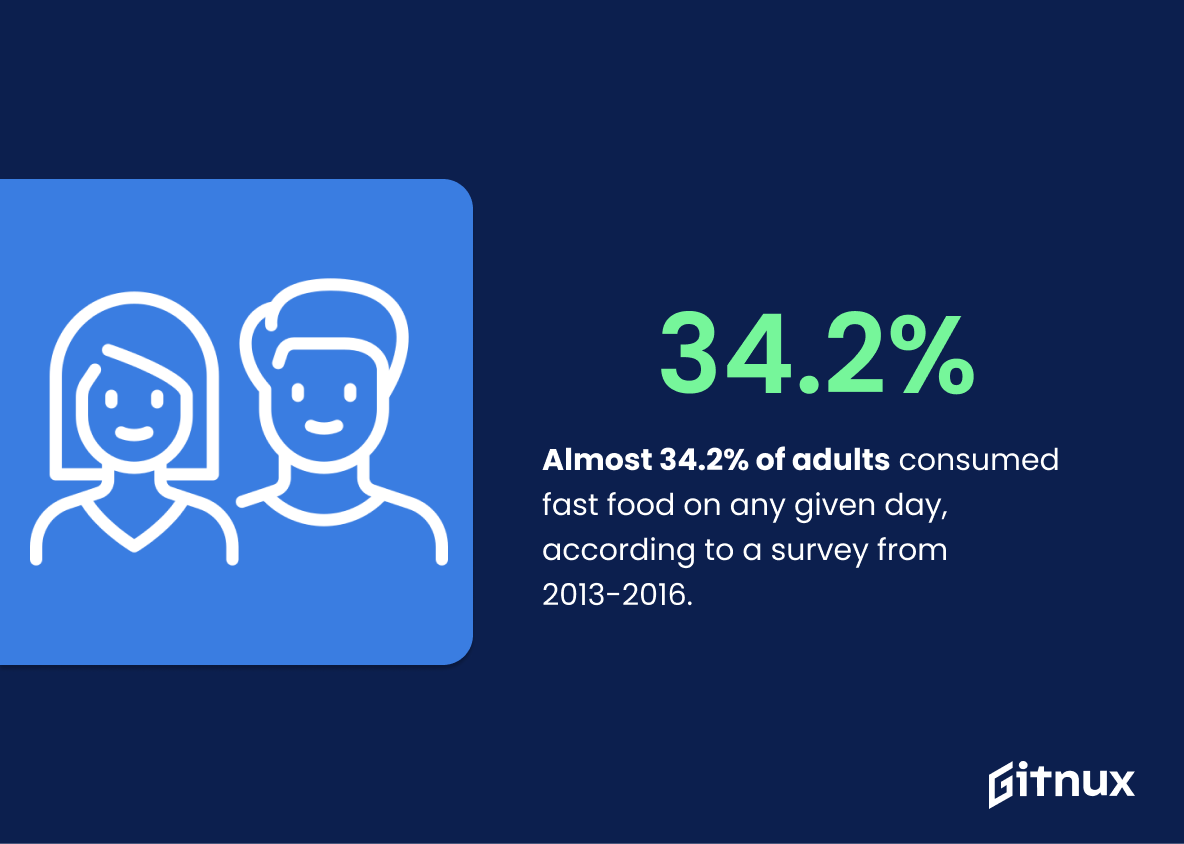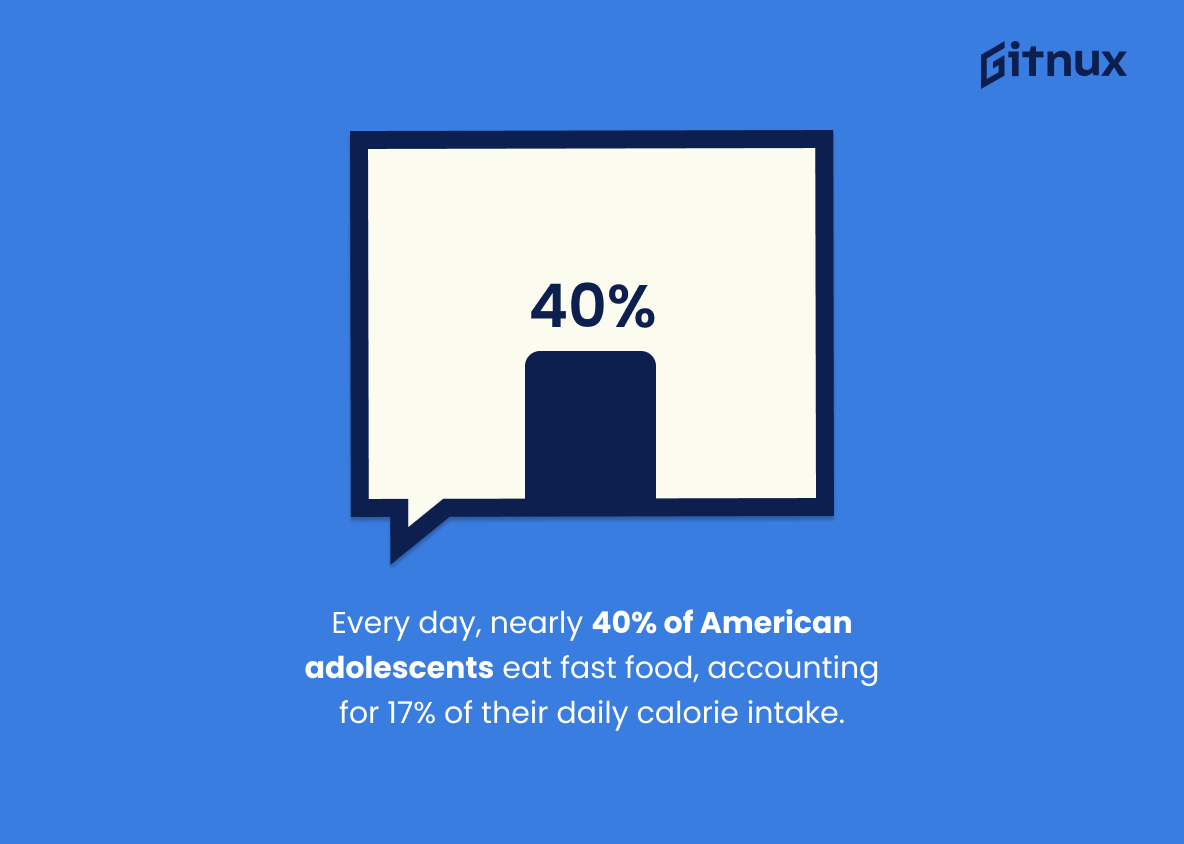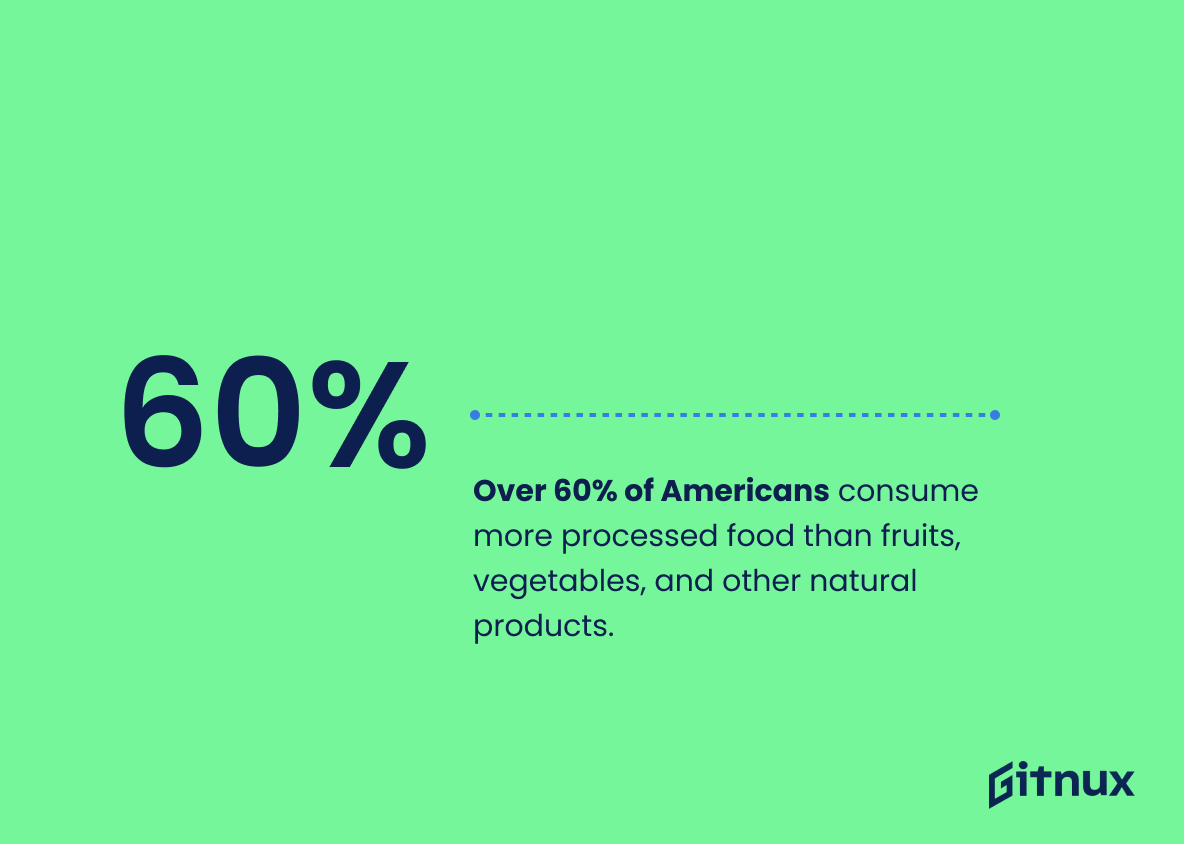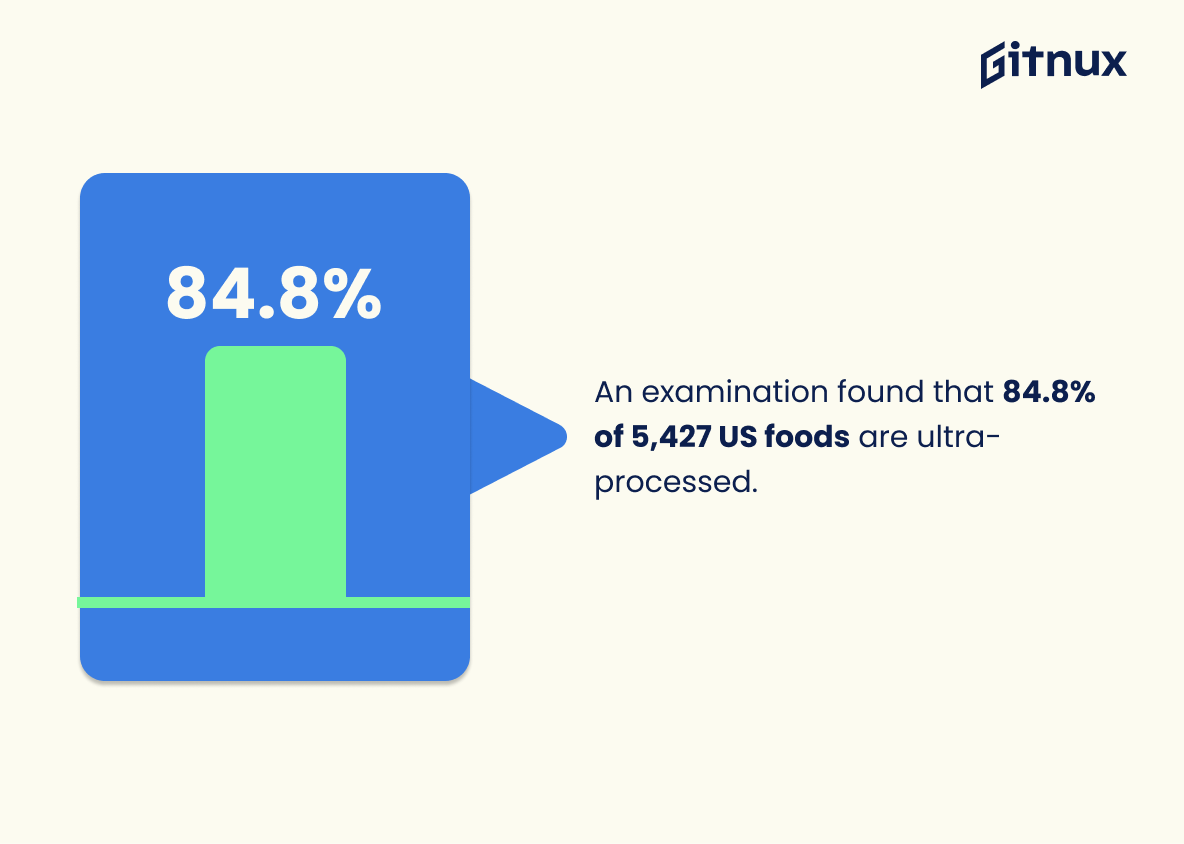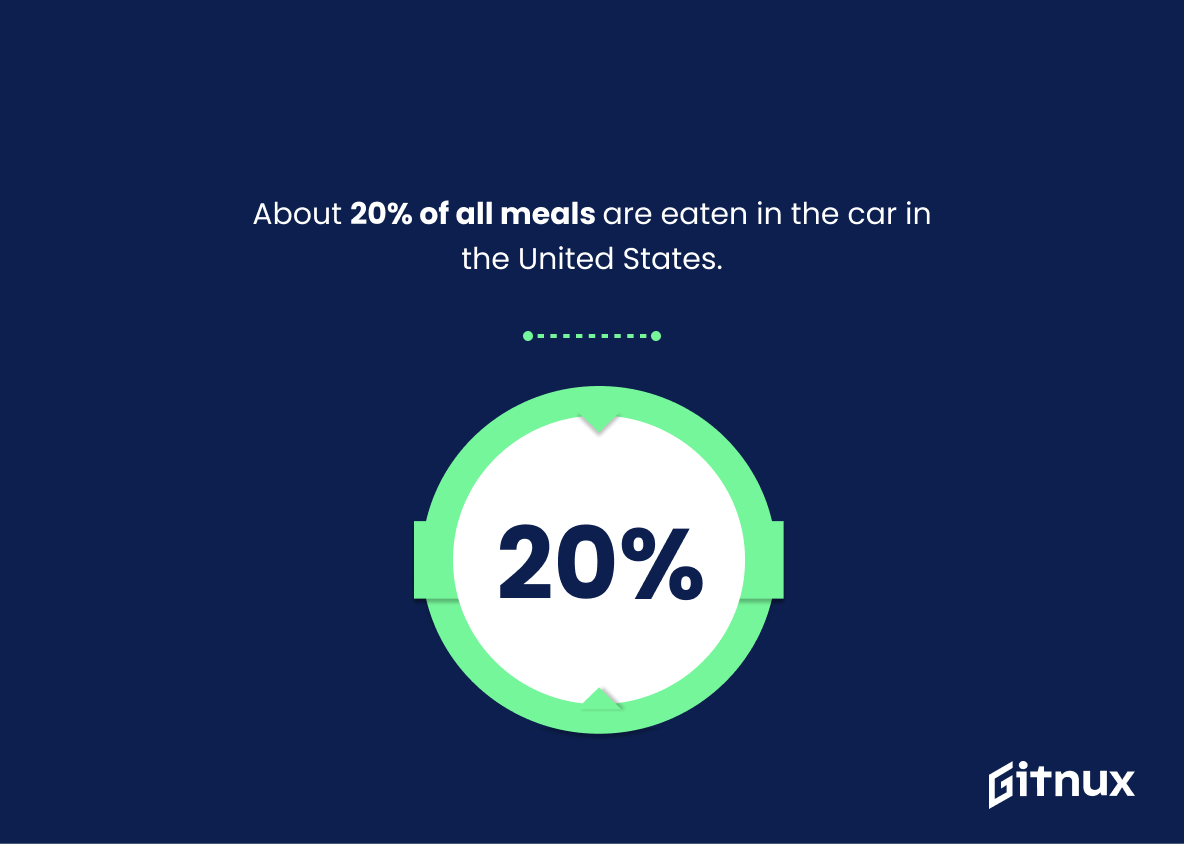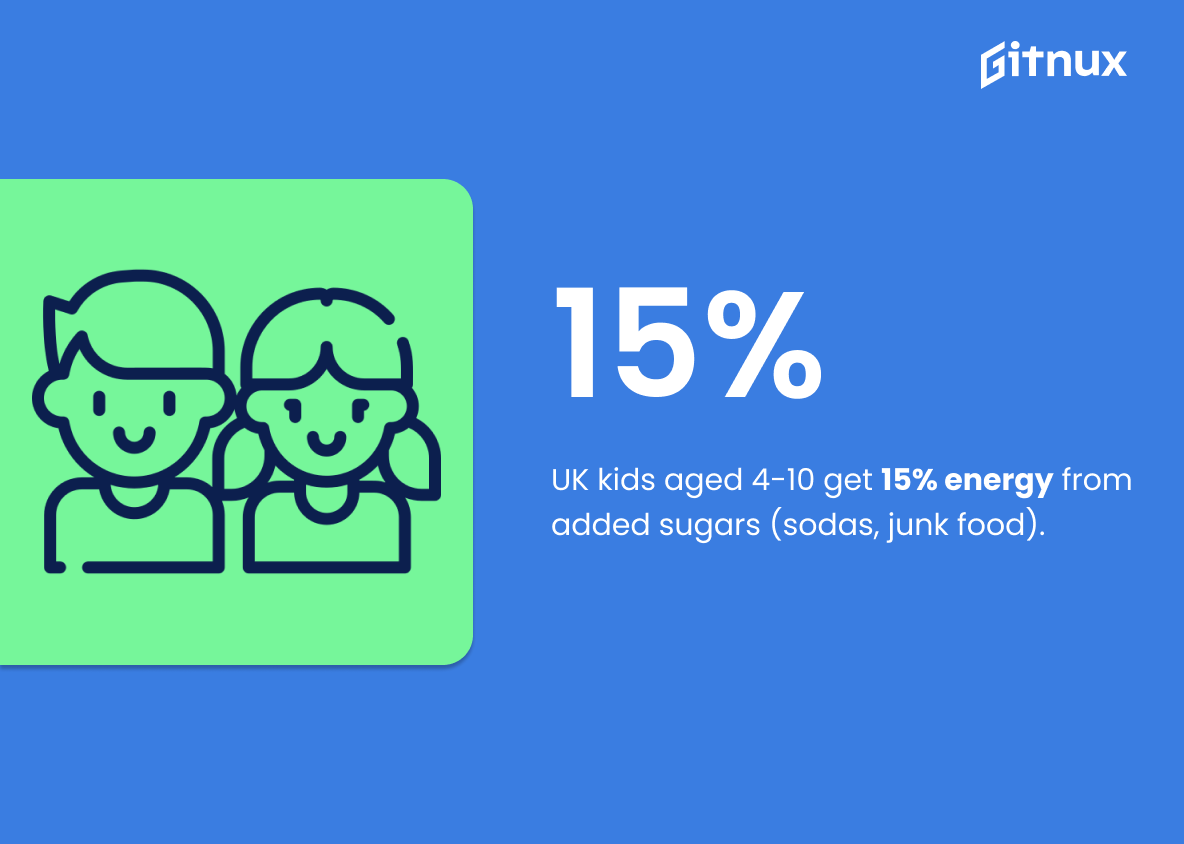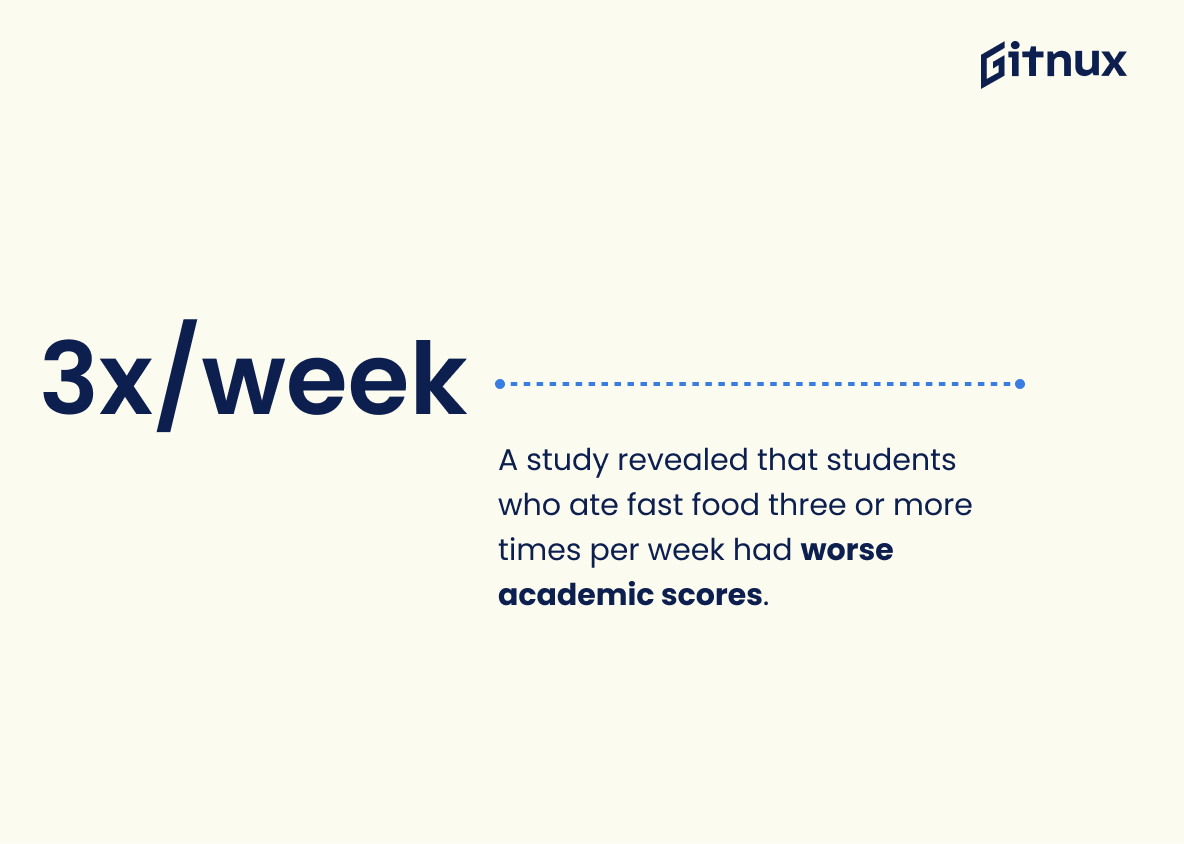It’s no secret that junk food has permeated our society, becoming an ingrained part of our daily routines and culture. Whether it’s a quick drive-thru burger for lunch or a late-night bag of chips, these quick fixes have a immense impact on our health and well-being.
In this blog post, we’ll be diving deep into the troves of data surrounding junk food consumption. We’ll unpack intriguing junk food statistics to reveal the true scale of this phenomenon, paint an accurate picture of our trending dietary habits, and interpret what these figures may suggest about our collective health. Brace yourself because these numbers might just prompt you to rethink that next bite of your favorite snack.
The Latest Junk Food Statistics Unveiled
Almost 34.2% of adults consumed fast food on any given day, according to a survey from 2013-2016.
These intriguing figures serve as a mirror to the fast-food consumption habits of adults, painting a compelling image of the immense influence of quick-service meals in our daily dietary practices. Based on a survey from 2013-2016, it was observed that nearly 34.2% of grown-ups gratify their appetites with fast food on any given day.
This reinforces the magnified role of such convenience food in our contemporary society and further amplifies the gravity of the junk food statistics under discussion in this blog post. Within this context, the figure transcends beyond a mere number; it becomes an alarming prompt for a deeper discourse on our societal eating patterns, nutrition choices, and their respective potential health implications.
Every day, nearly 40% of American adolescents eat fast food, accounting for 17% of their daily calorie intake.
The spectacle of these numbers casts a rather ominous light on the eating habits of American teens, portraying a landscape where junk food isn’t merely an indulgence, but a staple. With each passing day, almost half of this demographic succumbs to the allure of fast food – not a sporadic slip in judgment, but an entrenched habit accounting for a significant 17% of their daily caloric consumption.
Presenting such figures in a blog post revolving around Junk Food Statistics allows readers to truly digest the scale and severity of this dietary disaster. It doesn’t just highlight the enormity of the issue, but puts a stern exclamation point on the urgency for impactful, effective interventions to shift this dietary trend.
Over 60% of Americans consume more processed food than fruits, vegetables, and other natural products.
Highlighting the staggering statistic that over 60% of Americans prefer processed food over natural products like fruits and vegetables casts a glaring spotlight on the American diet landscape. It paints a compelling picture of dietary habits and provides a concrete anchor to discuss the ubiquity and potential pitfalls of junk food consumption.
In a blog post centered around junk food statistics, it acts as an indisputable testament to the inextricable link between the American plate and the infiltration of processed foods. This statistic sets a poignant scene by quantifying the scale at which junk food has edged out healthier food choices, further accentuating the relevance and urgency of the blog’s subject matter.
An examination found that 84.8% of 5,427 US foods are ultra-processed.
The insightful figure that 84.8% of 5,427 US foods being ultra-processed presents a fascinating, yet alarming dimension to our discourse on junk food. With such magnitude, it becomes an instrumental piece to the narrative thread of junk food statistics, painting a vivid image of the vast prevalence of low-nutrition, high-calorie items in our diets.
Indirectly, it acts as a barometer, measuring our increasing reliance on quick, easy, and detrimentally ’empty’ meals. By highlighting this statistic, we are able to anchor the discussion, drive home the urgency of addressing our food choices, and create an impactful impression of the magnitude of the junk food panorama before us.
About 20% of all meals are eaten in the car in the United States.
Peeling back the crunchwrap of the statistic that around 20% of all meals in the United States are enjoyed in cars, unveils an appetizing layer of relevance for a blog post discussing Junk Food Statistics. It draws a dotted line towards the likelihood of higher consumption of quick, handy, and often less healthy food options; notably, fast food and pre-packaged meals.
Interpreting this, we can proclaim that this harmonizes with the symphony of factors contributing to the popularity and prevalence of junk food in American dietary culture. It injects context into the discussion, laying the breadcrumbs for readers to understand the convenience-led choices often made when meals are consumed on the go, and thus, putting the spotlight on the underlying causes of rampant junk food consumption.
In the UK, children aged 4 to 10 consume around 15% of their daily energy intake from added sugars, primarily through soft drinks and junk food.
Highlighting this data underscores the alarming truth about youth dietary habits in the UK. It paints a compelling picture of the heavy reliance on added sugars, especially through soft drinks and junk foods, which contributes a significant chunk to their daily energy intake.
In a discourse on junk food statistics, this nugget of information underlines the extent of the predicament we face with childhood nutrition, thereby amplifying the urgency to address and rectify poor eating habits among kids for the betterment of their long-term health outcomes. Furthermore, it helps to quantify the challenge and could be pivotal in shaping health policies and persuading stakeholders about the impact of unhealthy food choices on our future generation.
An expert study found that an average fast food meal contributes around 836 calories, almost half the recommended daily calorie intake for some women.
Our love affair with fast food is often mirrored in the convenience it offers, disguising the harsh reality presented by this expert study. Using these figures as a stark illustration, it turns out that an innocent fast food meal, a ticking taste-bomb, actually dispatches around 836 calories. This numerical truth is a rude awakening, to see fast food meals being almost as devious as swallowing half the recommended daily calorie intake for some women.
In the grandeur scheme of a junk food expose, these digits hold significant weight. They serve as an eye-opening reminder about the direct connection between convenience food and its consequential relationship with overconsumption, overly high calorie intake, and the potential risk of numerous health issues. We could essentially walk around with loaded calorie-guns, oblivious of their potency. Without statistics like these, we risk blindly navigating the nutritional landscape, misjudging and underestimating our actual daily calorie intake.
A study revealed that students who ate fast food three or more times per week had worse academic scores.
Unraveling the layers of impact that fast-food consumption bears on academic performance, this study punctuates the narrative of Junk Food Statistics with a startling insight. It amplifies how the allure of quick, easy meals could have stealthy repercussions going beyond merely physical health; it seems to cast a shadow on cognitive abilities too.
Within the deluge of nutrition-focused data, this discovery acts as a beacon, pressing upon the need for comprehensive public health measures. It pushes readers to grapple with the extent of influence fast food can wield, motivating them to re-evaluate their food choices, not just from the perspective of physical well-being, but intellectual growth too.
Conclusion
The statistics provided in this article illuminate a glaring, global problem – an increasing predilection for junk food. As these figures underline, the overconsumption of unhealthy, processed foods is causing widespread health issues, from obesity to heart disease. While the responsibility of curbing this trend falls upon each individual, it’s clear that governments, corporations, and society as a whole must also step up to address this.
By promoting healthier eating habits, enforcing stricter dietary guidelines, and encouraging exercise, we can work towards a healthier population. As consumers, let’s also do our part and make conscious choices to limit junk food intake, not just for our own good, but for a healthier world, one bite at a time.
References
0. – https://www.www.cbsnews.com
1. – https://www.www.cambridge.org
2. – https://www.jamanetwork.com
3. – https://www.www.ers.usda.gov
4. – https://www.www.cdc.gov
5. – https://www.www.nidirect.gov.uk
6. – https://www.www.healthdata.org
7. – https://www.www.nih.gov
